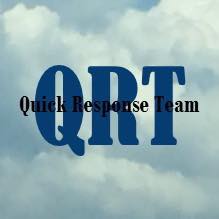An innovative program in West Virginia that provides outreach to individuals who have overdosed to engage them in treatment
Started in 2017, the Huntington Quick Response Team (QRT) is a collaborative effort of the Cabell County EMS, the city of Huntington, Huntington Police Department, Marshall University, behavioral health agencies, and faith leaders to reduce the number of overdoses in the community. The four-member QRT team consists of a paramedic, a counselor, a law enforcement official, and a faith-based organization member.
The team attempts to conduct home-based outreach to the person who has overdosed and their families within 72 hours of the overdose to provide educational materials and encourage them to initiate post-overdose treatment services. The goals of the program are to reduce overdoses by 20% and recurrent overdoses by 40% and to increase the number of individuals engaged in treatment after an overdose by 25%. The program has since expanded to include individuals who self-refer or whose families contact the QRT to seek treatment. A more detailed description of the program can be found in this presentation and in this report. A 2025 academic publication shows the the QRT has been successful in reducing overdoses.
In 2020, the Bureau of Justice Assistance selected the Huntington QRT as one of eight model programs for its Law Enforcement/First Responder Diversion and Referral Program Mentoring Initiative. The Mentoring Initiative funds site visits to the mentor programs for communities interested in learning more about starting a similar effort.
Nearly 1200 individuals have been successfully contacted by QRT after a nonfatal overdose with many linked to MOUD and recovery programs.









